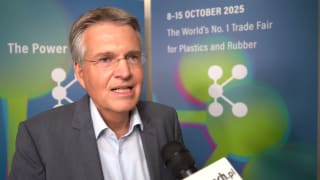Which of Lanxess's product groups are the most promising today? What new products can we expect in the near future?
We are pleased to say that the products in our portfolio that are based on the agricultural and urbanization megatrends continue to develop positively. The sales volumes in the rubber sector were also firm in the first quarter of 2014, though we continue to face increasing price pressure in this sector and the competitive environment has become more difficult. With the investments we made over the last few years we should be capable to introduce new products in all of our respective operating segments. Also in the rubber division we are currently testing new product developments, which might come to the market in the next few years.
Despite the continuing difficult situation in Europe, Lanxess has invested in a polyamide factory in Belgium. Isn't that project going to destroy the company's finances because of the high costs of labor in Western Europe?
Lanxess has invested EUR 75 million in the polyamide plant in Antwerp, Belgium. High-tech plastics play a key role in sustainable mobility as auto manufacturers are using more lightweight materials in order to meet tougher CO2 emission standards. Although costs such as labor are higher in Western Europe, Lanxess is able to remain competitive in this field because it is a frontrunner in the technology for lightweight plastics. This technological advantage over the competition helps to compensate for the higher cost base. At the same time, Antwerp is a key plastics site for Lanxess, where it also produces the key raw materials to make such lightweight materials. This backward integration into the value chain also gives the company a distinct cost advantage.
The group has also made investments in Asia and Brazil recently. What is it that is attracting investors to Brazil, where the Polish company Synthos, for example, wants to invest too? Which of the two markets will be more important over the next few years?
Brazil is a country with a large population. The middle-class there is growing in size and wants to become more mobile, thus driving demand for tires and cars. We have expanded in existing plants and built new ones there in recent years in order to serve our customer base with lightweight plastics and high-performance rubbers that go into fuel-efficient tires. Given the growing population and burgeoning middle class in Asia, it remains our expectation that demand for products – particularly for the megatrends of mobility and urbanization – will also increase here. Both regions will remain vital for our business operations in the future.
Lanxess: remodelling of the company
2014-07-08



